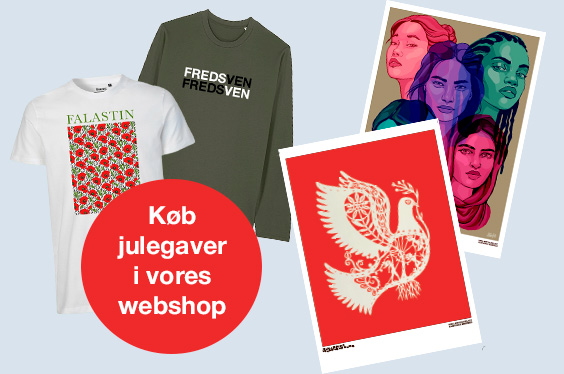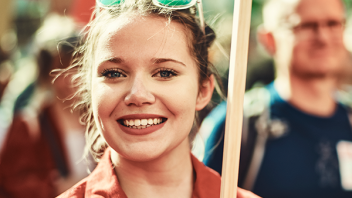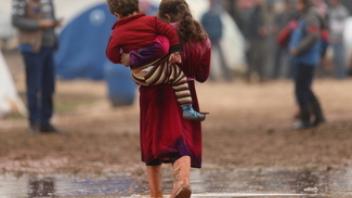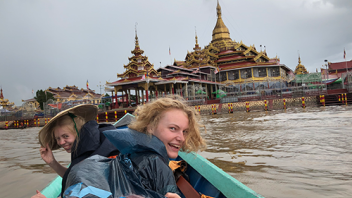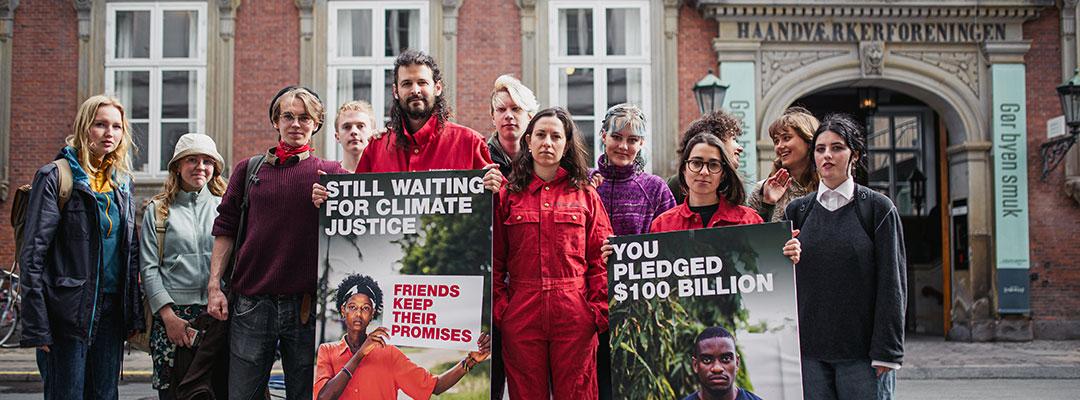
Our history
81 years of activism and humanitarian aid
Fighting for sustainability and equality since 1944
ActionAid Denmark was sparked to life, amidst the chaos of World War II. While the bombs were falling in 1944, three peace activists came together with a shared dream: to achieve peaceful reconciliation after the chaos of war.
The three activists, who later became the founders of ActionAid Denmark, were Elise Thomsen, Finn Friis and Hagbard Jonassen. Together, they aimed to rebuild war-torn Europe and foster understanding and collaboration across borders.
To achieve this, they brought together the associations ‘Aldrig mere krig’ (No More War), ‘Kvækersamfundet’ (The Quaker Society) and ‘Kvindernes Internationale Liga for Fred og Frihed’ (The Women’s International League for Peace and Freedom). On January 24, 1944, they established a new activist group called ‘Fredsvenners Hjælpearbejde’ (Friends of Peace Relief Work), which eventually evolved into ActionAid Denmark.
A brave act of humanitarian aid
In 1945, German refugees began arriving in Denmark, and in the years that followed, a quarter of a million people fled from Germany. They arrived with hopeful expectations of finding safe refuge, but the reality proved starkly different. The refugees were housed in camps under inhumane conditions, where thousands died from hunger and illness.
At the time, aiding German refugees in Denmark was not only frowned upon. It was also illegal. Both the central administration and several humanitarian organizations refrained from providing aid to German refugees. However, the board members of Fredsvenners Hjælpearbejde believed that everyone deserved to be treated with dignity - regardless of their nationality. In response, they provided relief to by gathering and distributing items such as food, medicine and clothes.
They provided humanitarian aid as private individuals to avoid having their newly established organization shut down by the authorities
Fredsvenners Hjælpearbejde recognized the need to challenge politicians and public opinion to fight for the dignity and rights of vulnerable people. This realization came to shape ActionAid Denmark as we know it today where protests, signature campaigns, and collaborations with other NGOs is crucial in raising awareness about injustice.
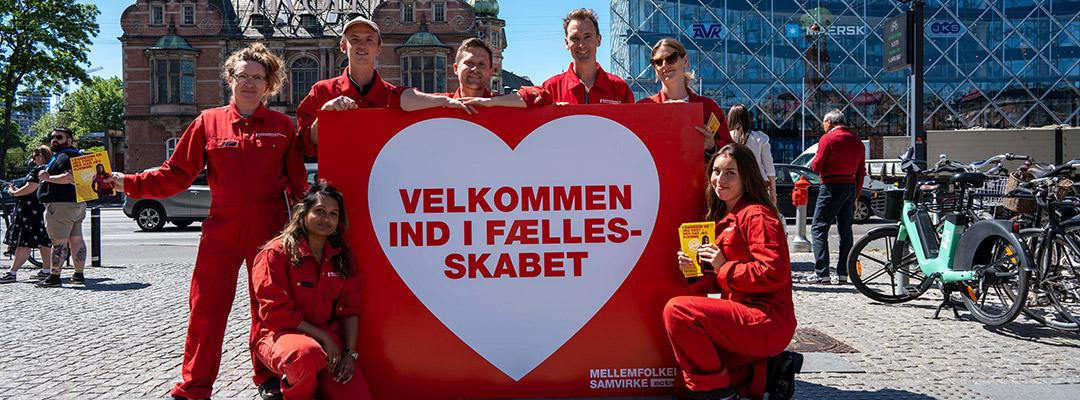
New name for a new era
In the wake of Germany’s liberation in 1945, Fredsvenners Hjælpearbejde decided to broaden the organization’s focus. As dedicated volunteers engaged in post-war reconstruction work in several European countries, a pivotal realization took root: The path to lasting change requires cross-border collaboration. A collaboration that, through reconciliation and understanding, could create lasting change for people in need. In recognition of this visionary shift, Fredsvenners Hjælpearbejde underwent a transformation, rebranding itself as Mellemfolkeligt Samvirke in 1949.
What does ‘Mellemfolkeligt Samvirke’ mean?
”Mellemfolkelig” describes the relation between a diverse group of people or nations. It is an expression of diversity.
“Samvirke” describes the act of working together.
Thus, “Mellemfolkeligt Samvirke” signifies collaboration that extends beyond national borders.
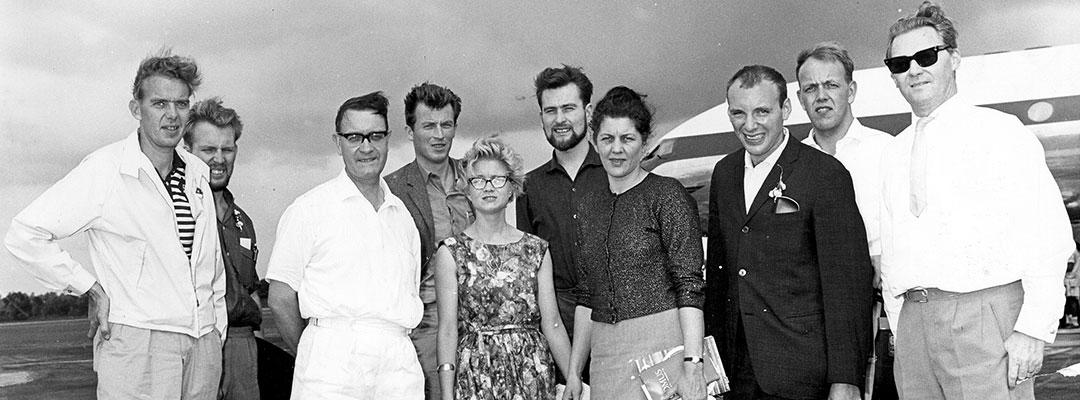
New international focus
From the moment Mellemfolkeligt Samvirke was founded, its mission has been to promote solidarity and collaboration across national borders.
After the post-war reconstruction of Europe in the 1950s and 60s, a new movement was unfolding in the former colonies of Europe. The movement fought for the independence of these colonies, and it strived to build new societies in the wake of colonial rule.
In 1958, we made the decision to look beyond the borders of Europe and dispatch volunteers to countries that were deeply affected by poverty. The first volunteers travelled to Ghana to assist in establishing a folk high school that would serve as a catalyst for collaboration and change.
We found that people were living in extreme poverty, which drove us to advocate for a governmental aid partnership with developing countries. We succeded in 1966 when the programme ‘Denmark’s development cooperation’ was established, also known as Danida.
As part of the new state aid law, we created the program ‘Danish Youth Development Work’. Through the program, young volunteers were sent to Tanzania, Kenya, and Nigeria. The aim was to distribute aid and to mobilize the population due to a critical shortage of labor. The program was also intended to anchor international work within Danish Society.
When the volunteers returned home to Denmark, they sought to raise awareness among the Danish population about the challenges abroad. They distributed 17.000 documents to Danish schools, local associations, and authorities, providing them with information about the conditions in developing countries. A strong volunteer community was now taking shape.
Democratic membership organization
In 1974, ActionAid Denmark became a democratic membership organization. Over time, local groups were established all over Denmark and we had members representing a large part of the country. This is how we gained the public’s support and a strong political influence. We remain convinced that the public’s support is crucial in achieving our vision: a world with less inequality and a fair distribution of the earth’s resources.
In the late 70s, we began working with refugees, active citizenship, and integration. We documented discrimination against ethnic minorities, and we engaged in democratic conversations with fellow citizens. This work continued throughout the 80s and 90s, with significant efforts in the 90s, to advocate for a political focus to improve integration. We succeeded in 1998, when the integration law was passed.
In 2007, we established the first Global Platform. The Global Platforms are international training hubs for youth-led activism focusing on organising and solidarity across socio-political boundaries. We believe that change can happen when young people collaborate, which is why we train young activists in promoting and creating democratic change. Today, we have 51 Global Platforms in 25 countries.
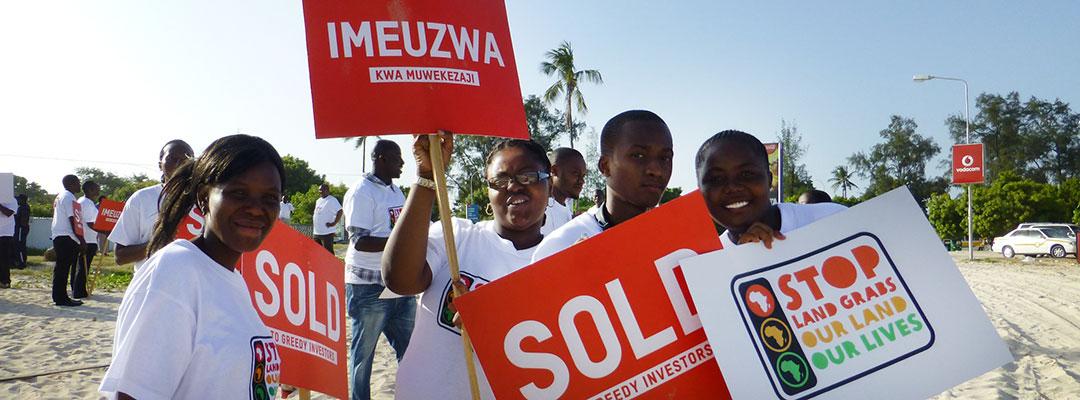
Member of ActionAid
In 2010, we became a part of ActionAid International, a global federation working for a world free from poverty and injustice in 45 countries. This had a significant impact on our international efforts and our voice around the world.
Today, we continue to advocate for a world with more solidarity and less inequality. We strongly believe that collaboration across borders is the path to lasting change. Two of the greatest challenges of our time are the climate crisis and discrimination. This is why we actively advocate for climate policies aimed at reducing pollution from the wealthiest countries, and we continue fighting for a world free from discrimination and racism.
We participate in humanitarian efforts in more than 45 countries, we create awareness campaigns, and we push for political changes in our pursuit for a better world.

